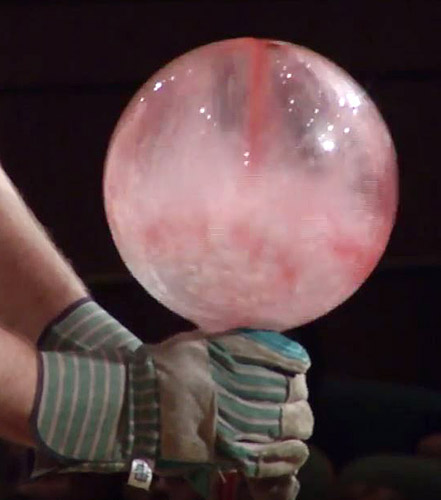What Happens
In this demo, water is boiled in a bulb shaped container. The bulb is turned over and placed into a container of water, dyed red. As the bulb cools, water from the lower container is pulled up into the bulb.
How it happens:
Steam pushes the air out of the bulb when the water is heated. When the bulb is removed from the heat, it begins to cool, the steam condenses the pressure goes down in the bulb. The room air pressure then pushes the water in the beaker up into the bulb.
Vocabulary
air pressure: Pressure exerted by the weight of air on an object in that air. There will be discussion about this when we describe the reason for the plunger being held onto a piece of clear plexiglass, when the rubber playground softball base is used to lift a chair using air pressure, when we use the Magdeburg disks being held together by air pressure and when we crush a 55-gallon drum using air pressure.
condensation: The changing of a gas into a liquid. In this case we will be discussing the condensation of water vapor into liquid water when we discuss the reasons for the 55-gallon drum being collapsed. When water vapor condenses to liquid water, it takes up considerably less space, and this is very important in reducing the pressure inside the drum.
steam: The gaseous state of water when it is heated above 100º Celsius at standard atmospheric pressure. When we heat the water in the 55-gallon drum, it will boil and turn to steam.
